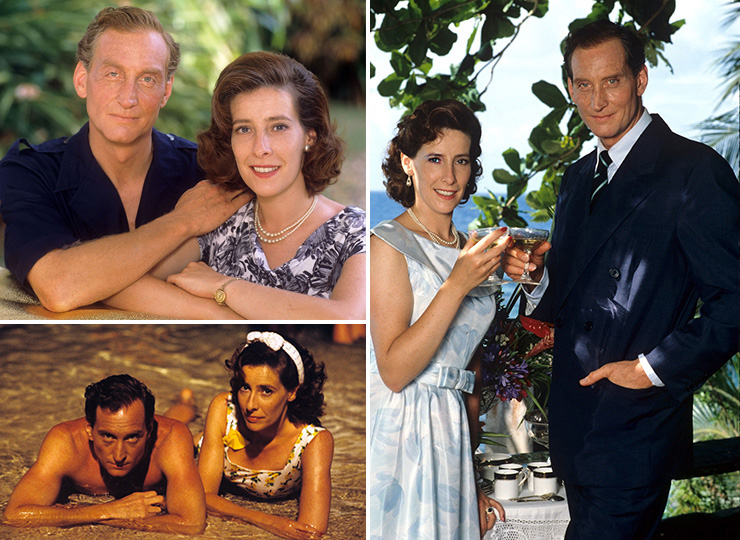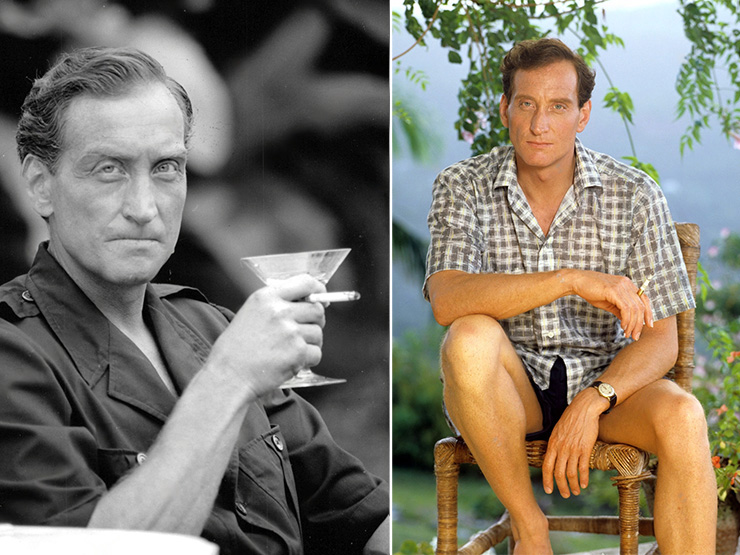|
EXCLUSIVE INTERVIEW |
||
|
||
|
EXCLUSIVE INTERVIEW |
||
|
||
 |
|||
|
So how long did you
actually shoot at ‘Goldeneye’ for? |
|||
|
|||
|
Was Tony’s presence a way of EON
approving of the project in some way? No. I made the decision for him to join. Brenda said to me, ‘You know, we’ve got a guy here who’s worked with EON. I want you to think about him as an associate producer.’ I said: ‘Fine, no problem’. So there wasn’t any official cooperation with EON? Absolutely not. Actually Tony said at the time: ‘I hope this isn’t something I’m going to feel embarrassed about later on!’ I said: ‘I don’t think you will be!’ He’d read the script and it was a high-profile production – Anglia were a big company and Goldeneye was a very prestigious project. Until I watched Goldeneye again, I didn’t realise that among your cast was Christoph Waltz – who later won an Oscar for Inglourious Basterds [around a year after this interview was conducted Waltz was also cast as Ernst Stavro Blofeld in Spectre]. Yes! I have to say there are a number of people who later got huge awards that I gave real breaks to! Christoph… I was so proud of him. He and I got on so well. He really loved doing Goldeneye. He was one of the token German actors living in London at the time. When I saw him I cast him in an instant – he’s so bright and so creative and totally entered into the spirit of the whole thing. |
|||
 |
|||
|
I thought Phyllis Logan was really well
cast as Ann Fleming… Totally my idea! I didn’t want to go for the archetypal upper-class girl. There was a lot of pressure for me to do that. I’d seen Phyllis in theatre and on television and I’d always liked her. I knew she was Scottish and Ann Rothermere had a Scottish background. I said to Brenda: ‘Look, she’s my first choice. I’ll see other people but she’s perfect.’ So I met Phyllis and we got on immediately. I said to her: ‘I don’t want there to be any form of sentimentality about Ann’, and she bought into that. We had a delightful relationship. When we were shooting I had to get her to speed up her dialogue a bit. It was a little slow. She probably can’t remember this, but I felt that she had to have some self-confidence about her because Ann was a very self-confident woman. And she had that imperiousness about her in the film, which I think worked really well. She’s an absolutely wonderful actress in every sense and really deserves her success. What was your impression of the real Ann? Quite frightening, and she wasn’t keen on talking a huge amount about her love affair with Fleming. She wasn’t well and I got the impression she was rather lonely. Ann Fleming had quite a tragic series of relationships in life; one husband died in the war, her son Casper committed suicide; Hugh Gaitskell, who was her lover, died as well. I’ve read a lot of her published letters. They are amazing letters, aren’t they? You’ve really done your research! Amazing! You can tell I haven’t revisited this for 23 years. But my memories of the project are pretty powerful. I liked Ann and I felt sorry for her. She wasn’t really very useful in research terms, to be honest. |
|||
 |
|||
|
I found the time scale of Fleming’s life
you focused on in the film very interesting; you focus on the war and his
relationship with Ann, and then you essentially leave the story just as
Bond is beginning. You don’t end in the traditional biopic way with
Fleming’s death. I wondered why you made that decision. Personally, I
think it works very well because if you try to deal with too much of
somebody’s life in less than two hours, it’s too sketchy. But I wondered
how you came to that decision… It was a very simple decision. I wanted everybody that saw the film to understand the catalyst for what became the books and the James Bond phenomenon – so I focused on Fleming’s love affair with Ann, his womanising, the war, his intelligence work – all of that period before he had any form of celebrity as a writer. I more or less stopped at the time that the first book was written. It just struck me as the right way to handle it. To deal with the catalyst, the backdrop and then allow people to take it from there. You know, Fleming and Bond are such iconic people, one a fantasy, one real, and there’s so much out there about them already. Biopics are a really strange sort of drama because as soon as you get to know anything that’s real, you’re sort of thinking, can I really dramatise this? How far can I go? There’s a kind of responsibility that enters into it and that was one of the things that Reg and I agreed about; that all our detail had to come from something that we knew was true in some form or another. In terms of the detail of the cocktails, the clothes, the tragedy, all of those things, I wanted it to be authentic. I also wove in, and I don’t know if you noticed this visually, but I really studied the period and the era and I brought in small little visual references to people like [French photographer Henri] Cartier-Bresson. I did that deliberately to give it a form of authenticity; although one was dealing with the man behind the fantasy, a biopic of a man who wrote a fantasy, the detail and authenticity had to underpin all of that. I wondered if you could talk about what some of the references were – you mentioned Cartier-Bresson… Yes, Cartier-Bresson; there’s a tiny moment where you see a bunch of priests with their hats at the side, that was a nod to him. In terms of the World War II sequences, I went and visited all the war museums, watching films and archives, so those scenes reference the famous Humphrey Jennings documentaries of London during the war. |
|||
|
CONTINUED >> |